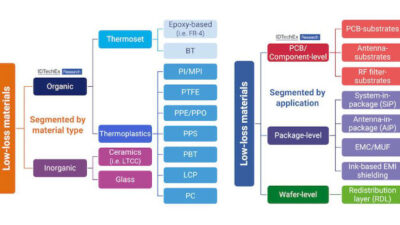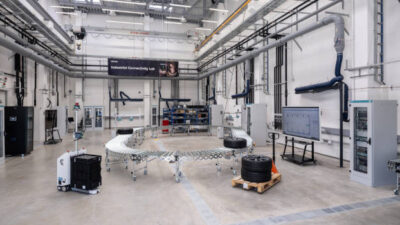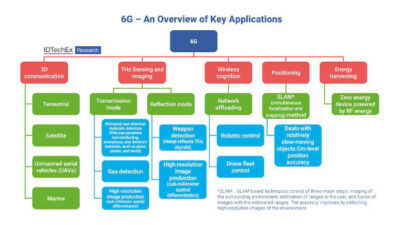ISA 100.11a and WirelessHART standards reflect contrasting attitudes toward network management and these standards impact operational effectiveness.
A plant or facility considering a wireless network to connect field devices, such as instruments and actuators, to control and monitoring systems has two main wireless protocol choices: ANSI/ISA 100.11a and WirelessHART. Both were adopted by the International Electrotechnical Commission (IEC) as global standards (IEC 62734- Wireless communication network and communication profiles and IEC 62591-Industrial networks- Wireless communication network and communication profiles, respectively) and have been used for about a decade.
The two approaches have many similarities. (For example, they use the same low-power IEEE 802.15.4 radio). WirelessHART’s mesh is a self-healing and self-organized network. ISA100.11a is also self-healing, and each node can have redundant paths, with users specifying these paths to organize the network. However, the ways in which the networks are organized differ significantly. Much hinges on the way the networks form communication paths and use meshing technology, which governs how individual field devices communicate bi-directionally with each other.
WirelessHART self organizes
Both protocols came out of the early 2000’s when automation technologies for process manufacturing were undergoing significant changes. The fieldbus wars of the earlier decade had subsided, leaving the impression on many automation suppliers that if a technology was too complex to operate, it could reduce the commercial viability in spite of its technical advantages.
WirelessHART came on the market promising simplicity and fast setup, perhaps hoping to avoid the main complaints related to Foundation Fieldbus and Profibus PA: they were too complicated to easily implement by typical industrial plant personnel. WirelessHART adopted many of the tools and techniques of traditional HART for wired instrumentation and applied them using wireless communication.
WirelessHART has a self-organizing capability so the devices on a network can automatically determine how to communicate with each other to exchange data. An individual instrument’s transmitter can send data to neighboring devices, which will pick up and pass the data on to one another until it gets to the gateway. This causes some latency, but it’s usually a minor consideration. The self-organization capabilities of the network are dynamic and adjustments can be made on-the-fly in response to changing conditions. The technology works and has benefits, but challenges exist:
- Making WirelessHART self-managing eliminates most tools for external management. The network creates its own communication paths, and there is no mechanism to override them manually.
- The self-organizing characteristic of WirelessHART means scalability can become an issue. Any gateway will have a maximum number of devices it can handle (up to 100 devices, for example). Self-organizing does not always mean self-optimizing. It can find a communication path for a given device with enough working radio links, but that communication path is not necessarily the most-direct path. Network designers can use diagnostic tools to see how devices are communicating, but WirelessHART has no means to direct which devices talk to which others. If less-than-optimal paths form, the mechanism to create new paths requires placing other devices in the network to allow the network to form better paths. Adding more devices does not necessarily clear up bottlenecks or reduce the number of hops a signal has to make to reach a gateway.
- The network’s capability to adjust itself as needed provides an attack surface for cyber invaders to try and exploit. For example, the “wormhole” attack aims specifically at ad-hoc networks, and it can disrupt normal communication paths even if the attacker has not compromised any hosts or broken any encryption. There are defensive techniques and successfully carrying off an attack is not easy, but networks depending on mesh communication have this critical weakness.
- The physical layout of a network can cause it to create communication paths which tend to depend on a small number of strategically placed nodes, with data from a large number of devices passing through these nodes. These “pinch points” can place a heavy burden on those strategic nodes such that if one is lost due to battery failure or some other disruption to the path, major parts of the network may be cut off.
The patent for WirelessHART acknowledges the potential for these pinch points and their likely effects:
“First, the wireless devices that have to communicate through the pinch point may have decreased communication reliability. Second, bandwidth for the wireless devices that have to communicate through the pinch point may be limited, and network performance may be adversely affected. Third, a wireless device that is a pinch point will consume additional power to transmit the increased message load. This is especially significant in battery-powered devices (resulting in decreased battery life) or devices dependent on energy scavenging (e.g. a solar-powered device).
“Pinch points occur due to a variety of circumstances. For example, pinch points can be the result of poor network design or installation, of a constantly changing RF environment, changes in the physical space in which the network is located (which impacts the RF environment), and of wireless devices being taken out of service.”
WirelessHART network analysis tools can monitor communication paths along with the status of the member devices, such as battery condition. The software can identify where pinch points have formed and can be set to warn human operators of their existence. Unfortunately, the network can’t do anything about correcting the situation because the solution invariably involves adding or moving devices to establish more favorable communication paths. Somebody has to rearrange things until the network can find its own solution or add another gateway in a different location and possibly subdivide the network.
ISA100.11a: Managed networking versus self-organizing
The ISA100 standards committee was formed to prepare a family of standards for wireless communication used in industrial automation applications. ISA100 Working Group 3 was responsible for the development of ISA100.11a, and products have been shipping under the ISA100 Wireless brand since 2013.
The larger standard writing effort started with the notion that networks supporting complex manufacturing environments had to cover more than just field devices and instrumentation. The standard’s creators also believed that obtaining maximum performance and security should outweigh oversimplification. Some network planning and management would be necessary to deliver the performance and control desired by serious users. This would have to be accomplished without the usability problems that hampered fieldbus adoption.
An ISA100.11a wireless instrumentation network can be set up to use self-organizing mesh networking much like WirelessHART, but it is not the only option. There are more tools and techniques available, and a user can choose the best approach for a given application and plant environment.
Simple planning and thought during the design phase of implementing ISA100.11a will go a long way to improving all the radio links the network depends on. Understanding basic signal propagation should guide device and antenna placement, avoiding the difficulties common to complex plant installations full of steel tanks and structures, and avoiding the downsides of mesh networking.
Rather than setting up large groups of devices all trying to reach the same gateway directly, ISA100.11a can use routers as relay points (Figure 1), and these collect data from individual wireless instruments, and then data goes to the gateway. Routers are simply wireless transmitters, such as a temperature transmitter, configured to communicate positively with the gateway.
This avoids sending signals among multiple field devices, which slows down data movement and increases power consumption for each device. By implementing ISA100.11a this way, meshing is used only when needed as a means to solve network disruptions, rather than constantly for every device’s communications.
Since meshing is not happening constantly, a field instrument with a very slow refresh rate, such as a level indicator on a large tank, can sleep for long periods of time. This will conserve power rather than being constantly active and communicating with other devices. If significant network disruptions break the link between a field instrument and its primary router, the device will automatically contact a secondary router.
Wireless network implementation
The most effective practice places routers in high positions where there is a clear line of sight to the gateway, coupled with the ability to look down to the individual devices (Figure 2). While most wireless field instruments have integrally-mounted antennas, if there is no clear line of sight to the router, the antenna may have to be moved clear of the obstructions. Moreover, since the individual instrument is trying to reach a specific point, directional antennas can be used to increase signal strength substantially.
Engineers and technicians working with network management tools establish these communication links, which once established, generally remain static over time since the equipment itself stays in one place. There can be disruptions, such as a truck blocking a radio link, but networks normally do not require constant readjustment. A well-deployed ISA100.11a network using these methods can remain stable for years. A weak device may need its antenna moved, which isn’t difficult to do.
The ISA100 family of wireless standards was built on concepts suited for process plant environments. From the ground up, it was made to work in refineries, chemical plants and other challenging situations. It also covered many forms of wireless communication beyond instrumentation.
WirelessHART, on the other hand, chose to pursue a much shorter development effort by adopting and adapting existing technology. While avoiding “reinventing the wheel” is often a sensible approach, in this case, a technology designed to form ad-hoc networks under constantly changing conditions presents challenges in some situations.
Choosing which wireless network to implement into a facility is critical, and the better choice for a given situation will depend on many variables.
Kinichi Kitano is a senior engineer in Yokogawa’s New Field Development Center. Edited by Emily Guenther, associate content manager, Control Engineering, CFE Media, [email protected].
MORE ANSWERS
KEYWORDS: WirelessHART, ISA100.11a
The self-organization capabilities of a WirelessHART network
Implementing a ISA100.11a wireless instrumentation network
WirelessHART and ISA100.11a wireless network capabilities.
Consider this:
Which type of wireless network would be the most beneficial to implement with a particular application?
ONLINE extra
Author Bio
Kinichi Kitano is a senior engineer in Yokogawa’s New Field Development Center. He joined Yokogawa after completing a master’s degree in engineering from Kyoto University with a specialty in control theory. He has had a variety of responsibilities with the company over his career including DCS design and implementation, field bus technologies and wireless networking.



